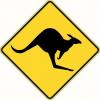Hi all,
after coming up short when searching the interwebs I'll turn to the expertise here. I'm playing with the idea of building a dedicated wooden shooting plane and a shooting board. With dedicated I mean low angle (35-38 deg bedding), bevel down and a skewed iron.
Philly planes has a skew miter which has these features. I've mailed them asking about the iron, but no answer yet. Any suggestions on where to find a iron for my project? Around 2 inches wide, preferrably tapered and pretty thick.
Best regards,
Sedell
ps. I don't have a grinder to regrind a standard iron.




 Reply With Quote
Reply With Quote






